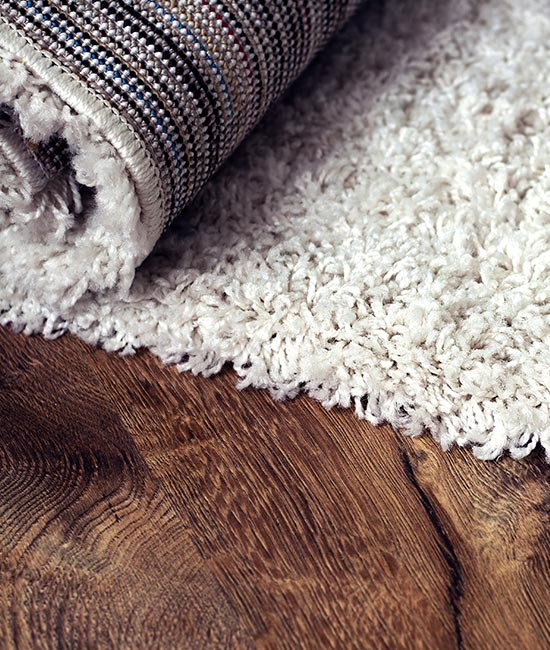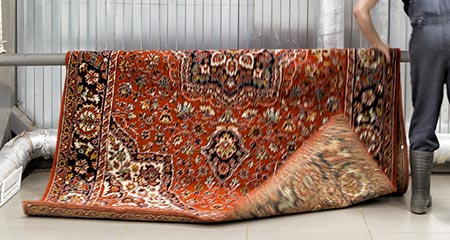
Tree pollen in spring, grass in summer, ragweed in fall, Harford County gets the full lineup. If you or your family sneeze more when windows open and HVAC kicks on, this guide shows how to keep allergens out of soft surfaces where they settle most: carpets, area rugs, and upholstered furniture. You will get practical routines, pro-level tips, and find out when it is a better idea to bring the experts in. For whole-home help, start at our homepage.
Allergens do not just float in the air. They also enter your home in other ways, hitching a ride on shoes, paws, and clothing before settling into fibers. Carpets and rugs hold fine dust, pollen grains, pet dander, and tracked soil. Upholstery traps body oils and micro-particles in seams and cushion channels. Without a plan, every time you step across the room or sit on the sofa can re-launch irritants back into the room.
Use this routine alongside the Harford County allergen calendar below, tightening the frequency during peak weeks.
Make the entry a capture zone. Keep a scraper mat outside and a washable mat inside, switch to a shoes-off habit, and wipe pet paws after walks. Rinse or launder the mats regularly so they do not become allergen sources.
Vacuum traffic lanes three to four times a week with a HEPA vacuum and a height-adjustable beater bar, using slow, overlapping passes. Once a week, flip smaller rugs and vacuum both sides to lift embedded grit. On sofas and chairs, run a soft brush tool along seams, creases, and under cushions to pull allergens from the spots where people sit and breathe.
Treat fresh spots promptly with a fabric-safe, neutral cleaner and blot rather than rub so soils do not migrate deeper. Keep moisture controlled and dry areas quickly with fans or HVAC to prevent musty odors and stop particles from wicking back as they dry.


Wash throws and removable pillow covers weekly when the care label allows hot water. Rotate small rugs to even out wear that traps debris, and run a damp microfiber along carpet edges and baseboards during the week to lift fine dust before it migrates into the pile.
When traffic lanes look dull, rugs feel stiff, or upholstery smells stale despite your routine, schedule professional cleaning. Natural-fiber and hand-knotted rugs respond best to an off-site wash with controlled drying, while wall-to-wall carpet and upholstery do well with fabric-matched hot water extraction or low-moisture systems that remove fine particles and residues without over-wetting.
With your weekly routine in place, match it to Harford County's pollen cycles using the allergen calendar below.
| Season | Common Allergens | Vacuuming (HEPA) | Spot Care | Pro Cleaning |
|---|---|---|---|---|
| Spring | Oak, maple, birch, pine pollen | 3-4x per week | Same day | Carpet or upholstery if symptoms spike |
| Summer | Grass pollen, dust mite growth | 2-3x per week | As needed | Rugs that feel stiff or look dull |
| Fall | Ragweed, leaf mold | 3x per week | Same day | Whole-home refresh before holidays |
| Winter | Indoor dust, pet dander | 2x per week | As needed | Deep clean if dryness raises dust levels |
Run HVAC fan on auto with a high-MERV filter, and change it on schedule. Launder throws and pillow covers weekly in hot water when fabric allows. Use a damp microfiber mop around carpet edges to pick up dust before it migrates into pile. Place washable mats at entrances and pet zones to intercept pollen and dander.
Over-wetting carpets with rental machines can push soils deeper and extend dry times, which may increase allergens and odors. Strong alkaline or perfumed cleaners can leave sticky residue that re-soils quickly. Scrubbing upholstery aggressively can distort fibers and set stains. When in doubt, blot, do not rub, and call a pro.
If regular vacuuming is not easing symptoms, traffic lanes still look tired, or cushions keep a faint musty smell after spot cleaning, it is time for a full reset. Professionals flush carpet pile with high-temperature rinse and strong extraction, wash natural-fiber rugs off-site for true soil release, and clean upholstery with fabric-specific low-moisture methods. This removes fine particles, salts, and sticky residues instead of pushing them deeper. Not sure what fits your home? Learn more about cleaning options to choose the right approach.
Go top to bottom. Dust higher surfaces first, then upholstered furniture, then rugs and carpets. Finish with a HEPA vacuum and change the HVAC filter if it is due.
Proper hot water extraction removes fine particles, water-soluble soils, and residues that can hold allergens. It improves appearance and can reduce irritants when paired with HEPA vacuuming and good filtration.
Most homes benefit from a professional clean every 6-12 months. During heavy pollen or if anyone is sensitive, target high-use areas mid-season plus a full clean at season's end.
Look for IICRC certification, proven experience with allergy mitigation, fabric/fiber testing before cleaning, and clear explanations of the chemistry they use. Great techs set expectations upfront, document what they are doing, and tailor methods for carpets, area rugs, and upholstery rather than using a one-size-fits-all approach.
Start with soft surfaces that see daily contact: wall-to-wall carpets, area rugs, upholstered seating, mattresses, drapes, and pet beds. Entry mats matter too, they are the front line for pollen and grit. Prioritize the items you touch and breathe around the most, then schedule deeper cleans for the rest on a rotating plan.
Allergy season in Harford County does not have to run your home. With consistent HEPA vacuuming, smart spot care, and timely professional cleaning for carpets, rugs, and upholstery, you can cut irritants and keep rooms feeling fresher. If you want a tailored plan, we are happy to help you choose the right mix for your space.
Call us at 443-567-4375 to get your free estimate today.
